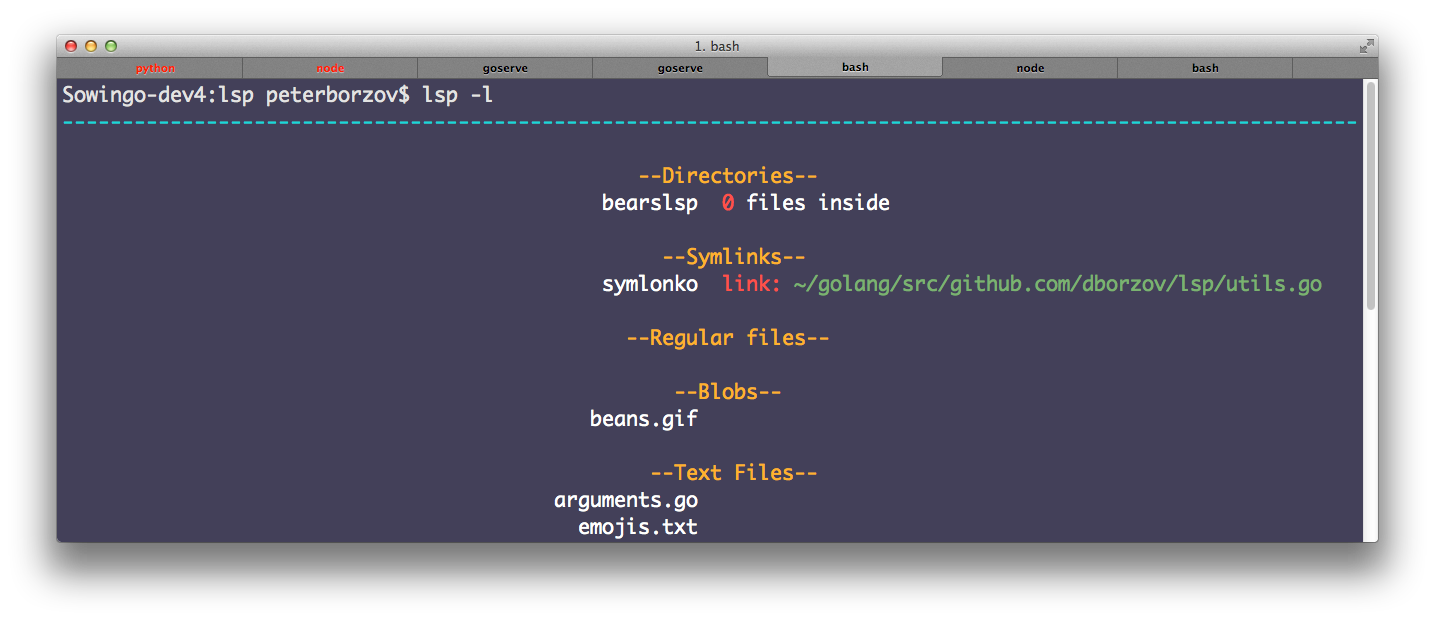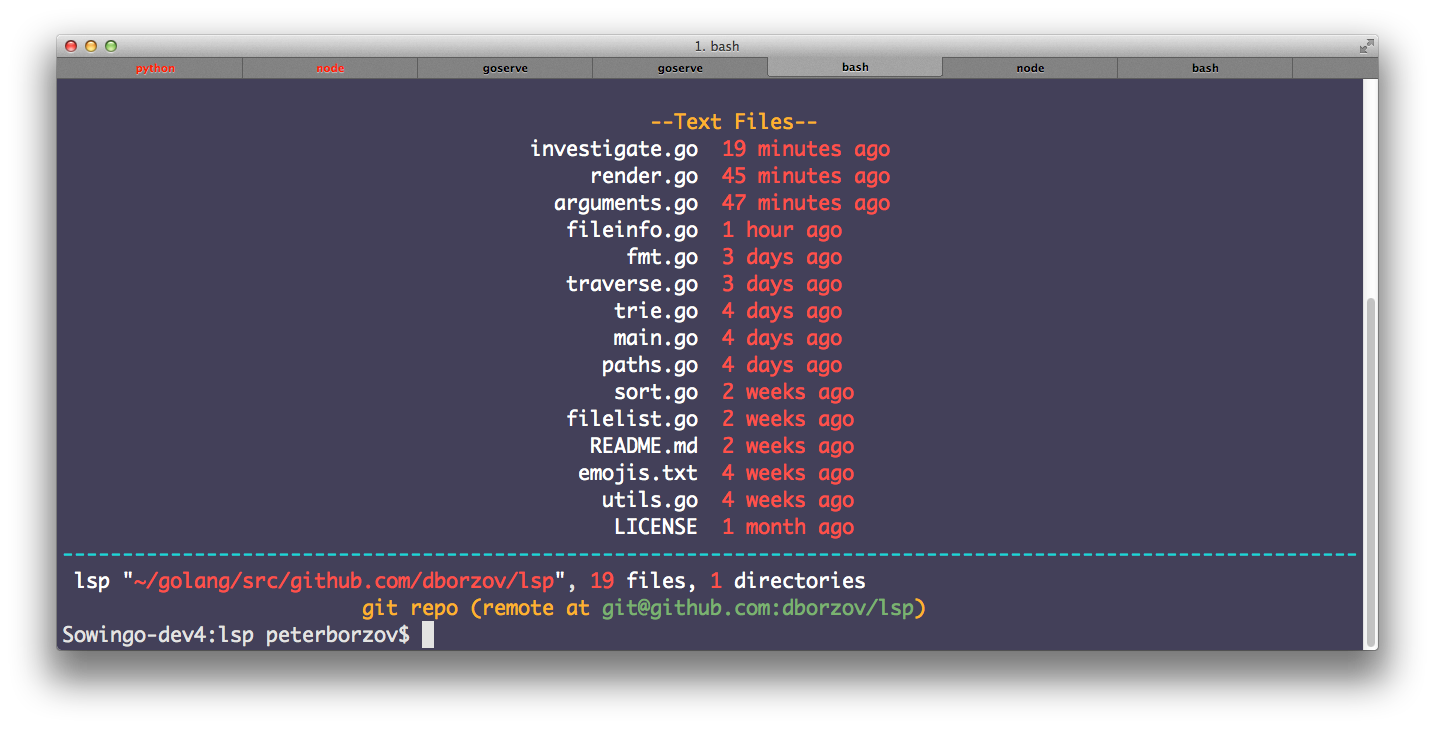lsp lists files, like ls command,
but it does not attempt to meet
that archaic POSIX specification, so instead of this:
(bash)$ ls -l
total 16
-rw-r--r-- 1 peterborzov staff 1079 9 Aug 00:22 LICENSE
-rw-r--r-- 1 peterborzov staff 60 9 Aug 00:22 README.md
Files grouped by type (with -l key or in modes when file type not shown). lsp distinguishes binary, text and executable files, symlinks and is aware of weird types like devices and unix socket thingy:

-t key for when you are interested in modification time. It turns to the mode that makes most sense to me when I want to look up modtimes, sorted within file groups from recent to latest:
 Sometimes relative times are not very readible as well (like when you are interested in a specific date), use two flags
Sometimes relative times are not very readible as well (like when you are interested in a specific date), use two flags -sl to show the full UTC timestamp in properties.
-s key, similarly to modtime key, shows file sizes and sorts within file groups from largest to smallest:

The file information is collected asynchronously, BFS-like, with a separate thread for each file and a timeout threshold.
That means that the execution is not going to freeze because of some low-response device driver (like external hard drive or optical drive) or collecting info about a huge directory.
I have been playing with aligning files and descriptions by center, and I like that you can see files with the same extension right away, but there are deifinitely cases when it gets weird.
For now, there is -p key to render the file table in the left-aligned columns:

- Rewrite outline formatting: with the current design too much space is wasted, long filenames break things
- Mark executable files as such
- Think about how to represent file rights and ownership
- Approach hidden and generated files as outlined in issue#3
- Better test coverage
- Expand in this README on philosophy of the project (tool in the unix way, minimize surprises, nothing's to be configurable)
- Think of TODO list points
Github Issues and pull requests are very welcome, feel free to message me if you are considering contributing. See CONTRIBUTING.md for intro to the codebase
lsp is written in the go programming language.
It can be installed using go get.
$ go get github.com/dborzov/lsp
Then make sure that your $PATH includes the $GOPATH/bin directory.
To do that, you can put this line your ~/.bash_profile or .zshrc:
export PATH=$PATH:$GOPATH/bin
Once it becomes more functional, lsp will be distributed in native binaries
(without dependencies) for all platforms (Linux, MacOS, Windows).
MIT license.
